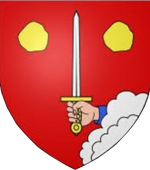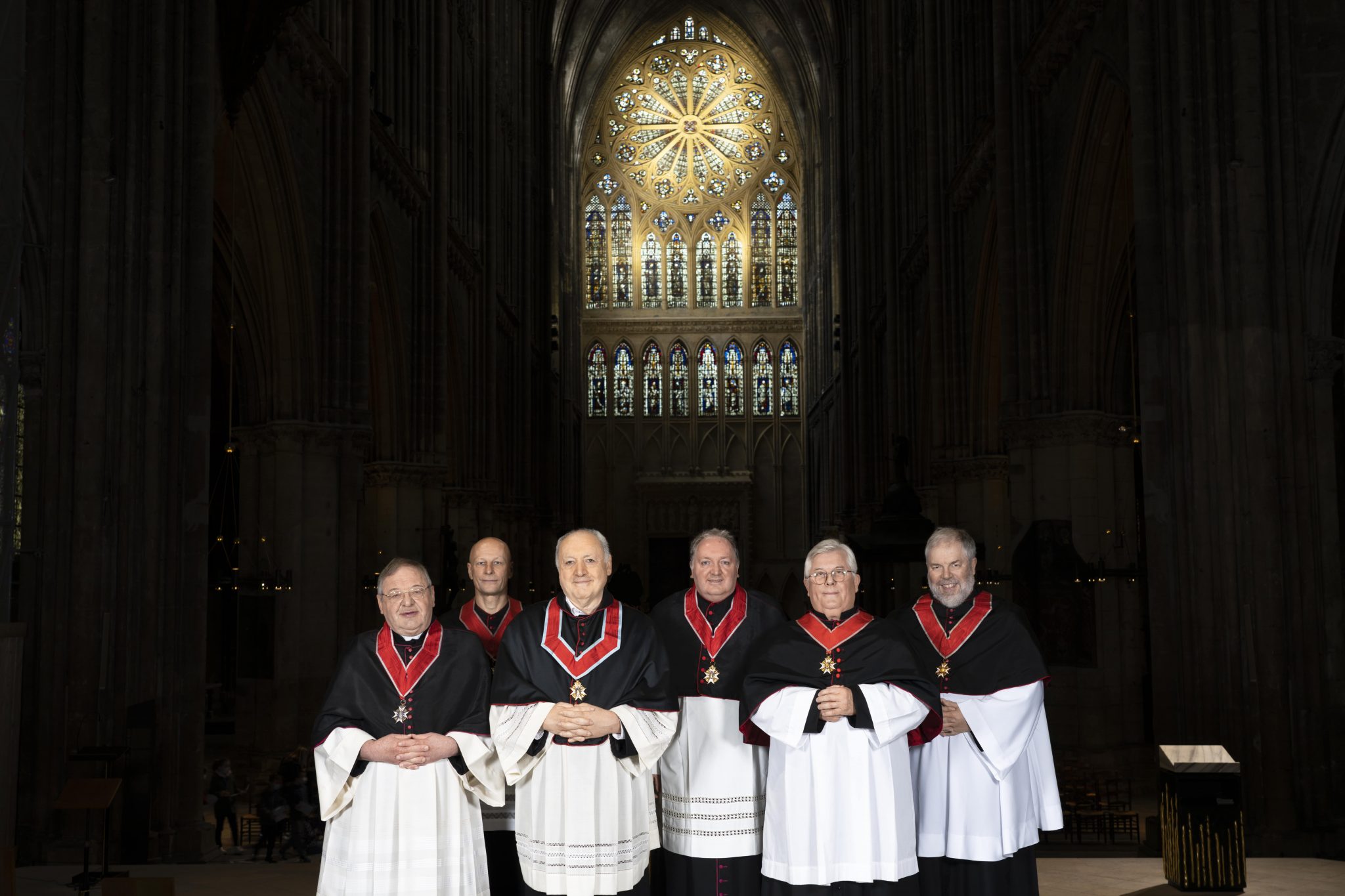The Cathedral Chapter

The Cathedral Chapter is a college of priests. These priests are known as ‘canons ‘. Life in the Chapter is regulated by statutes approved by the Diocesan Bishop.
As a reminder, the Cathedral is the church of the bishop, where he has his own throne called the ‘cathedra’. On behalf of the Bishop of Metz, who is responsible for this place of worship according to the Concordat law, the canons are in charge of welcoming visitors, the believers and the pilgrims, of leading prayer during the services, of overseeing patriotic and cultural events and, in general, of managing the Cathedral in collaboration with the government authorities.
Primary mission
The primary mission of the Chapter is to ensure the continuity of liturgical prayer in the name of and on behalf of the diocese in the Cathedral. It assists the Bishop during the solemn celebrations of the liturgical year and during major diocesan events. Every day it celebrates the morning service, the Chapter Mass and the Terce. It also conducts the daily celebration of the Sacrament of Penance.
Members
Under the patronage of the apostle Saint Paul, the Chapter may include up to eight priests incardinated in the diocese of Metz. They are chosen and designated by the Diocesan Bishop, after consulting the Chapter. In addition, their appointment is also subject to the Prefect’s authorisation. They are known as titular canons.
Upon their retirement, titular canons become honorary canons.
Honorary canons may be appointed by the Diocesan Bishop in order to gather a sufficient number of priests for the celebration of the Liturgy of the Hours (the services for the Church’s prayer) conducted by the Chapter.
The Canons’ choir dress, whether titular or honorary, is as follows: black cassock, surplice, camail and the Chapter cross. On some occasions, the Canons may wear the Chapter cross on the alb.

Roles and responsibilities
Elections are used to distribute the roles and responsibilities within the Chapter. They are assigned for a six-year period, and may be reassigned another term after. A canon may have more than one role. The appointment to any role or responsibility within the Chapter must be approved by the diocesan Bishop.
He represents the Chapter in the eyes of the Diocesan Bishop who they report to for their mission. He has the responsibility for dealing with the public authorities on behalf of the Chapter.
He ensures the Chapter’s statutes are correctly applied. He preserves the unity within the Chapter, focusing particularly on community.
He draws up the agenda of the Chapter meetings and conducts the ones that the Bishop or one of his delegates cannot attend. When a majority cannot be reached during a vote, he is the one to deliver the casting vote.
According to the statutes of the Presbyteral Council, he is an ex officio member of that institution.
He organises and coordinates the pastoral missions for the whole Chapter, taking particular care to promote the missionary activities outlined by the Bishop.
He takes part in the meetings and in the communal commitments of the Archpriest of Metz Cathedral.
He is in charge of the material, spiritual and cultural affairs within the Cathedral. He is essentially the link between the different public and private bodies responsible for the conservation, maintenance and security of the Cathedral, in addition to dealing with the representatives of the Ministry of Culture.
He is responsible for all the staff that work in the Cathedral (both paid employees and volunteers), for the scheduling of all religious and cultural events planned in the Cathedral, for the keys to the buildings, and for the general internal organisation.
He takes charge of scheduling celebrations when they are not led by the Pontifical Master of Ceremonies or any other person chosen by the Bishop.
Because of his duties, the Guardian is Vice-Dean. He steps in to replace the Dean in his absence or acts on his behalf.
He manages the Chapter’s material possessions following administrative and accounting regulations in force in the Diocese. He reports to the Chapter.
Every year he submits the accounts to the Bishop or to one of his delegates.
He takes the minutes of every Chapter meeting.
Over the course of his tenure, he manages the Chapter’s archives. He must guarantee that no document leaves the Cathedral without the prior approval of the Chapter, even if only for a limited time.
Appointed by the Diocesan Bishop, he has the ordinary faculty, which he cannot delegate to others, of absolving in the sacramental forum outsiders within the diocese from undeclared latae sententiae censures not reserved to the Apostolic See (c. 508 CIC).
The Chapter may entrust other duties to the Canons. It may, for example, designate a canon to be responsible for the music, especially for the choir and organists. With his chosen collaborators, who have been approved by the Bishop and the Chapter, and in collaboration with the diocesan authorities responsible for music, this canon coordinates the musical and liturgical activities within the Cathedral.
If the Episcopal See of Metz is vacant (c. 416 CIC), unless the Holy See appoints an Apostolic Administrator, it is up to the Cathedral Chapter, in accordance with the Concordat of 1802, to take on the role assigned by Canon Law to the College of Consultors and to appoint the Diocesan Administrator who, as a consequence, will be given the title of Vicar Capitular (cf. c. 419 and onwards CIC).
Origins and history
The Chapter of Metz Cathedral was instituted by Saint Chrodegang, 37th Bishop of Metz (742-766). Abolished on 24 August 1790, like all the cathedral Chapters, by a decree by the Constituent Assembly, it was reinstituted on 1 July 1802 by His Grace Pierre-François Bienaimé, 93rd Bishop of Metz (1802-1806), with the help of the powers granted to him by the Legate Caprara by decree of 9 April 1802.
The Cathedral was only a parish and episcopal church from 1791 to 1802.
In 1913, during the episcopate of His Grace Willibrord Benzler, 98th Bishop of Metz (1901-1919), a new set of statutes was promulgated.
In 1994, His Grace Pierre Raffin, 102nd Bishop of Metz (1987-2013), brought about changes to the statutes by integrating the new Canonic laws (Canonic Laws 503 to 510 CIC) which were promulgated in 1983 by Pope John Paul II.
In 2021, His Grace Jean-Christophe Lagleize, 103rd Bishop of Metz (2013-2021), modified the statutes by clarifying the different roles of the canons.
The Chapter’s seal reproduces the traditional coat of arms « Gules, arm carnation rising from a silver cloud brandishing a silver, gold-hilted sword between two golden pebbles« .






